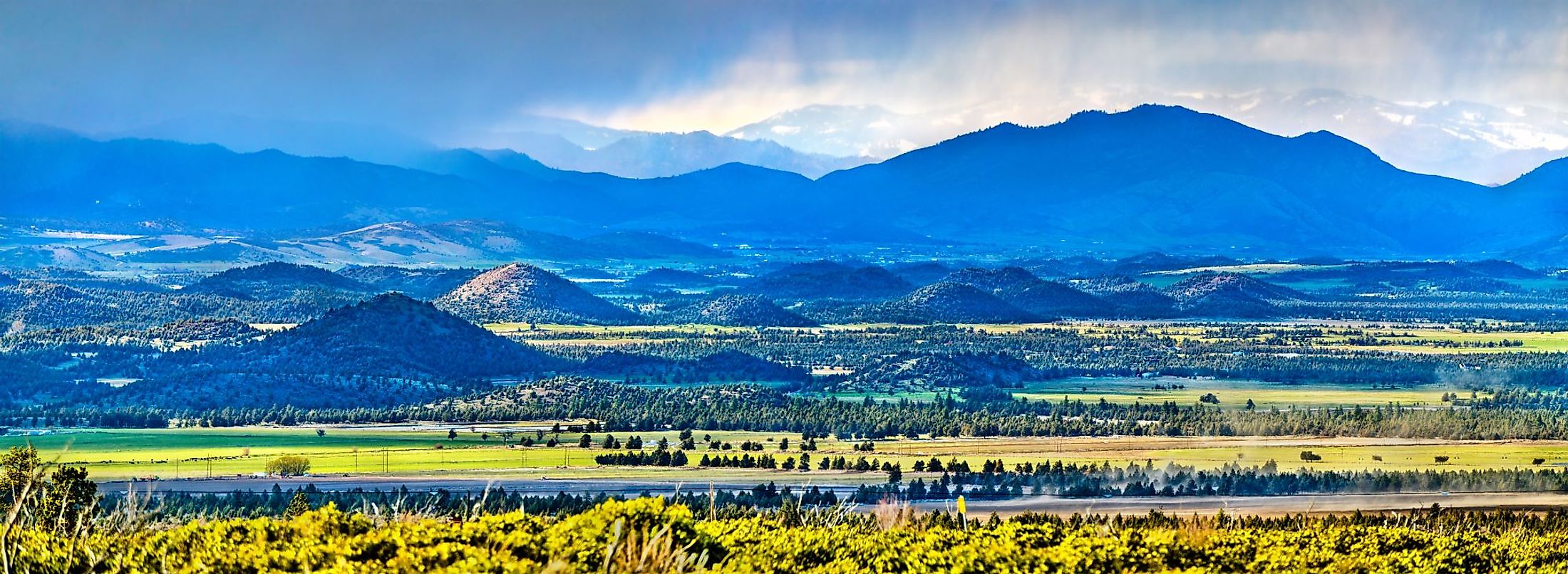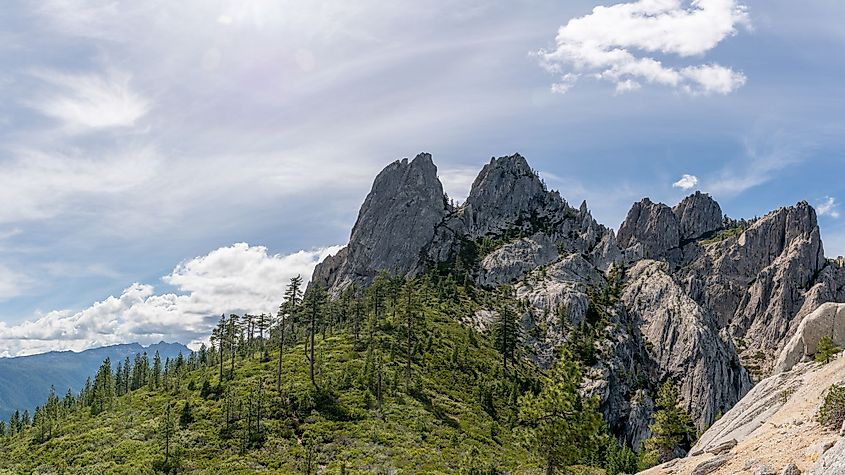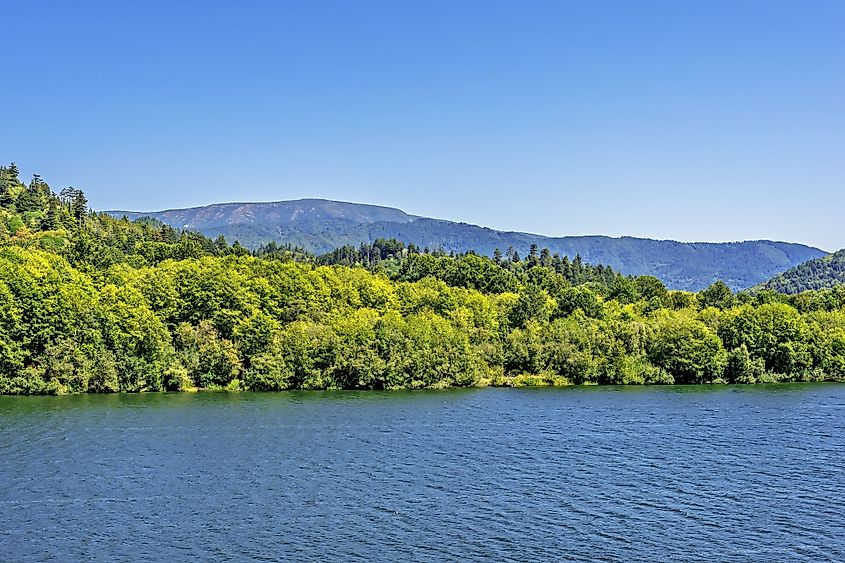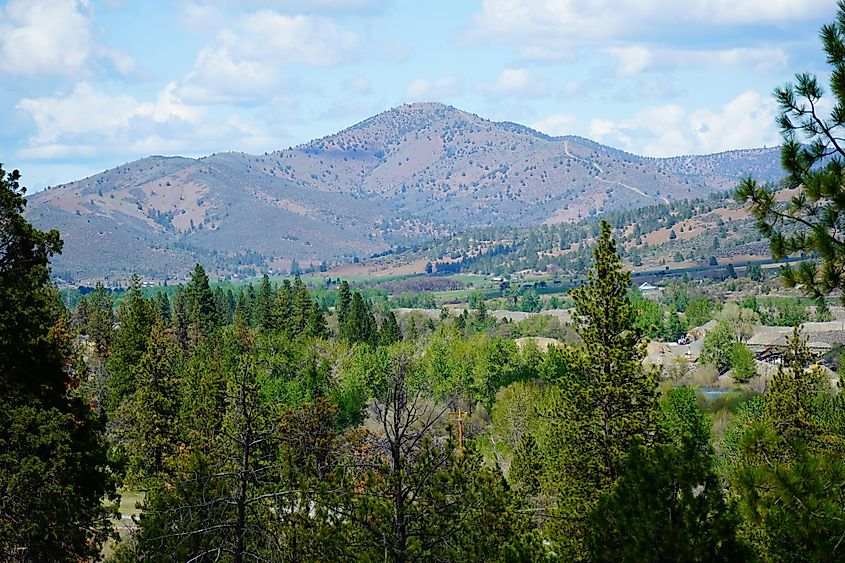
Klamath Mountains
The western United States' rugged and steep Klamath Mountains are located in southwestern Oregon and northwest California. The range, which bears the name of the Klamath Indians, is largely enclosed by conservation areas and includes the Oregon Caves National Monument as well as a portion of the Klamath and numerous other national forests. The Klamath Mountains are the second-largest block of alpine wilderness in California and home to 11 protected wilderness areas in Oregon and California, yet they are nonetheless less populated, visited, and recognized by outdoor enthusiasts despite having significant hiking trail networks.
Geography Of Klamath Mountains

The Klamath Mountains are a massive mountain range in southwestern Oregon and northwestern California that lies inland from the Coast Range but west of the Cascades. While 30% of the range is in Oregon, 70% of it is in California. The mountains have a total area of 9,882 sq.m and are a part of the Pacific Mountain chain of western North America. Trinity Alps, Marble Mountains, Siskiyou Mountains, Eddy Range, Salmon Mountains, and Castle Crags are just a few of the numerous mountains that make up this diversified chain, with the Siskiyou Mountains being the Klamath Mountains' largest subrange. The Klamath Mountains' highest peak is Mount Eddy, with an elevation of 9025 ft. The Shasta-Trinity, Siskiyou, and Klamath National Forests, as well as a 211-mile section of the Pacific Crest Trail, a renowned National Scenic Trail, and the 400-mile Bigfoot Trail, which starts in the Yolla Bolly-Middle Eel Wilderness and ends in northern California's Redwood National Park, can all be found in the Klamath Mountains.
Geology Of Klamath Mountains

A prime example of a mountain belt formed by the tectonic accretion of rock assemblages with oceanic affinity during progressive crustal expansion along an active continental margin is the Klamath Mountains province in northwest California and southwest Oregon. The Klamath Terranes are made of igneous and metamorphic rocks that are hard and intricately folded and faulted. High, rocky mountains and steep river valleys with poor access and sparse population have been created as a result of the mix of hard rocks and the humid coastal climate. Two significant west-flowing rivers—the Rogue River in Oregon and the Klamath River close to the border between Oregon and California—cut the Klamath Mountains into separate sections. Both of these rivers originate in the Cascade Range and flow into the Pacific through extensive canyons that traverse the whole Klamath Mountains. No road has been constructed to follow the Rogue River as it travels through the mountains because the river has carved out such a large and difficult-to-reach canyon. The Wild Rogue Wilderness was established to protect a portion of this wild region near the Rogue River.
Climate Of Klamath Mountains
With warm summers and cool winters, the Klamath Mountains area has a Mediterranean climate. The average annual temperature is 13°C, with July and December recording the highest (24°C) and lowest (4°C) average temperatures, respectively. The region's low elevations, particularly those in the east, receive as little as 18.5 inches of rain annually, whereas mountains, especially those nearer the coast, receive over 118 inches of rain near their summits. This climate is sufficiently arid to cause significant changes in vegetation by elevation.
Wildlife In Klamath Mountains

In the deep forests, oxbow rivers, and valleys, river otters, black bears, mink, bald eagles, osprey, and peregrine falcons are commonly seen. Although the region is home to a number of different snake species, only rattlesnakes normally constitute a hazard. Moreover, several species of trout and salmon use the numerous mountains, streams, and rivers as a primary breeding area; however, recently, in the last 50 years, some of the fish stocks have declined dramatically, particularly salmon stocks. The main causes of the depletions are dams and clear-cutting on the region's steep slopes, which increase the quantity of silt in the streambeds and impede salmon spawning by preventing them from laying their eggs in exposed gravel beds. King, kokanee, silver salmon, brown trout, brook, rainbow trout (including steelhead), crappie, bluegill, catfish, etc., are some of the famous fish species found in the rivers of the Klamath Mountains.
The Klamath Mountains' unmatched natural splendor is free from suffocating human influence. And this is what makes it unique, its unspoiled environment. Thus, it must be protected from potential future human misuse and exploitation.
Ten Highest Peaks In Klamath Mountains
|
Rank |
Peak Name |
Elevation in feet |
Elevation in meters |
Sub-Range |
|
1. |
Mount Eddy |
9025 |
2751 |
Trinity Mountains |
|
2. |
Thompson Peak |
9002 |
2744 |
Salmon Mountains |
|
3. |
Mount Hilton |
8934 |
2723 |
Salmon Mountains |
|
4. |
Caesar Peak |
8920 |
2719 |
Salmon Mountains |
|
5. |
Sawtooth Mountain |
8891 |
2710 |
Salmon Mountains |
|
6. |
Wedding Cake |
8570 |
2612 |
Salmon Mountains |
|
7. |
Caribou Mountain |
8560 |
2609 |
Salmon Mountains |
|
8. |
China Mountain |
8551 |
2606 |
Scott-Scott Bar Mountains |
|
9. |
Gibson Peak |
8399 |
2560 |
Salmon Mountains |
|
10. |
Boulder Peak |
8299 |
2530 |
Marble Mountains |











